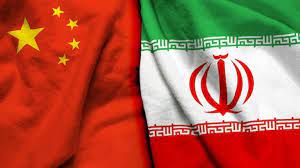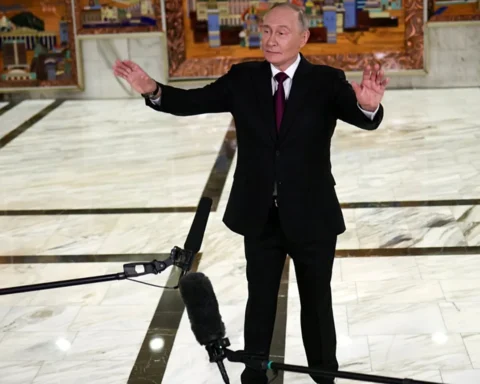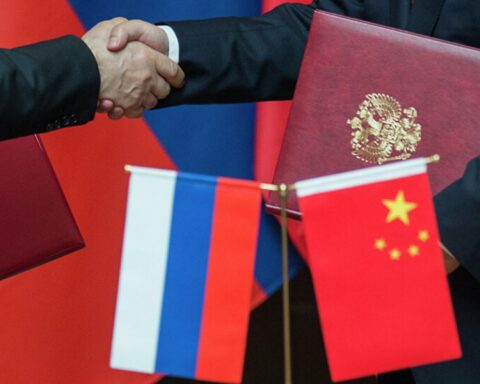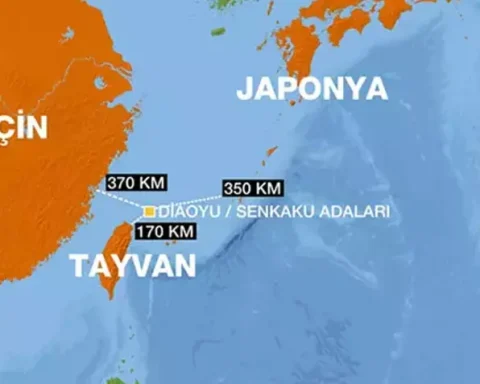- China is under pressure to back Iran militarily despite its non-interventionist tradition.
- Beijing’s support for Iran would protect its regional investments and influence.
- African and Central Asian partners are watching closely to gauge China’s reliability as a security partner.
After the recent attacks by Israel and the United States, Iran will likely upgrade its conventional defensive and offensive capabilities with China’s help.
Despite the well-publicized Iran–China 25-year Comprehensive Strategic Partnership, Chinese officials, including Foreign Minister Wang Yi, temporized by criticizing Israel’s actions and expressing concern over regional instability; President Xi Jinping urged both sides to cease hostilities and proposed a four-point peace framework, avoiding direct blame on Israel. China maintained economic ties with Iran, but refrained from providing weapons or direct assistance, consistent with its non-interventionist foreign policy.
Despite China’s low-key approach, plane watchers claimed regularly-scheduled CARGOLUX flights from China to Europe “went dark” as they passed over Tehran. It is doubtful the carrier, CARGOLUX, a leading air cargo carrier, would take the sanctions risk of delivering weaponry to Iran, whatever China may have offered to pay.
Though Russia was criticized for failing to provide Iran with the S-400 air defense system (supplied to China, Belarus, Algeria, and Turkey) and the Su-35 combat aircraft (supplied to China, India, Egypt, and Indonesia), Moscow can be excused as it is fighting NATO in Ukraine. That said, Iranians won’t forget they came to Russia’s aid in Ukraine by supplying the Shahed-136 drone with full technology transfer that allowed localized production, and ballistic missiles.
An Iranian delegation headed to China as the embers in Tehran were still cooling, as they likely noted how well Chinese aircraft and missiles performed in the recent Pakistan-India skirmish. The Iranians reportedly want the Chengdu J-10C multirole fighter jet that can deploy the PL-15 long-range missile, and advanced Airborne Warning and Control System equipment.
Israel urged China to pressure Iran to curtail its military and nuclear ambitions, though Beijing is more likely receptive to the concerns of Qatar, Saudi Arabia, and the United Arab Emirates. The Gulf Arabs may be more unnerved by an unrestrained Israel that is the source of regional instability (with U.S. connivance) than a recovering Iran, so they may green-light arms sales by Beijing to support their recently improved relations with Tehran.
Though China has historically relied on economic diplomacy, it may have to take a greater role as a security partner of Iran if it wants to stake a legitimate claim to world leadership. All that “Win the war without fighting” stuff is great, but if it wants to be at the top table a nation must sometimes provide military support to allies, rather than point to a Comprehensive Strategic Partnership document as proof of its bona fides as a reliable partner.
Supporting Iran is also about protecting China’s Belt and Road Initiative (BRI) investments in the region. China has sunk US$39 billion into the Middle East, US$62 billion into the China-Pakistan Economic Corridor (CPEC), and funded 112 projects in Central Asia in transport, mining, energy, and manufacturing, with increasing emphasis on technology and green infrastructure. And hurting BRI projects is also a way to counter the BRICS bloc that has U.S. President Donald Trump so exercised.
China is the major military supplier to Pakistan, supplying Islamabad with main battle tanks, fighter jets, frigates, surface-to-air missile systems, and a spy ship, accounting for 81% of Pakistan’s imports from 2020 to 2024, and 63 percent of China’s global arms exports.
Central Asia nations have started to buy Chinese arms to diversify imports as Russian vendors are busy supplying Russia’s war with NATO. Recently, China sold drones and anti-aircraft systems to Kazakhstan and Uzbekistan, and Uzbekistan is considering a purchase of Chinese/Pakistan-made JF-17 multirole combat aircraft, which are likely cheaper and easier to maintain than Western offerings.
So, China is a potential key arms supplier to the belt of countries running from Pakistan to Iran, then Central Asia. If Beijing does not shy away from the political commitments that come with arms sales, even if there is no mutual defense pact, it will reap the benefits of increased responsibility and of satisfying the expectations of its new partners.
A next step would be to propose a network of radar pickets from Pakistan to the Caucasus. It could be part of an improved regional air traffic control system that relies on government primary radar. This arrangement could detect Western, i.e., American and Israeli, military aircraft, and give Iran, Pakistan, and the Central Asian republics warning of the next attack, which will protect civil aviation safety in the region.
Iran may have already taken delivery of Chinese surface-to-air missile batteries, which may be the cause of Israel’s unease. Iran received HY-2 Silkworm cruise missiles from China in the late 1980s, and later secured C801 anti-ship cruise missiles as part of its plan for an Anti-Access/Area Denial capability so Chinese military assistance to Iran during hostilities isn’t a new policy as much as a revival of past practice.
The day before Israel attacked Iran, the Forum on China-Africa Cooperation (FOCAC) convened in Changsha, Hunan Province. China announced “zero-tariff treatment for 100 percent tariff lines to all 53 African countries having diplomatic relations with China.”
The June FOCAC meeting complemented the September 2024 Forum on China-Africa Cooperation, a triennial summit that alternates between China and Africa, when more than 50 African leaders visited Beijing. At the Forum, China pledged US$50 billion in funding, 1 million jobs, credit lines, investments, and military aid, and President Xi proposed upgrading bilateral relations with African nations to a “strategic” level.
Over the last 20 years, China has become the leading trade partner of 52 of 54 African countries, displacing the U.S. with a mix of BRI investments, loans, a critical minerals strategy, and top-leader involvement to produce a trade relationship of US$295 billion in 2024, reflecting a 6 percent year-on-year increase. In 2023, African countries received US$21.7 billion in BRI deals, including investments in ports, railways, and renewable energy in 53 African countries, which China is using to secure access to the continent’s mineral wealth and trading relationships that privilege Beijing over the West.
During the Israel-Iran duel, the second China-Central Asia Summit was convened on 17 June 2025, in Astana, Kazakhstan. President Xi met the leaders of the Central Asia republics and the event generated 58 deals worth nearly US$25 billion, spanning green technology and hydrogen production, agriculture, infrastructure (the China–Kyrgyzstan–Uzbekistan Railway), and energy.
China also pledged over US$209 million for regional development projects and will offer 3,000 training opportunities to Central Asian countries over two years and visa-free travel for citizens of Kazakhstan and Uzbekistan.
Though grateful for the investments and trade opportunities, African and Central Asian leaders may be wondering about Beijing’s reliability in a time of troubles after the Comprehensive Strategic Partnership with Iran secured only press releases in response to the Israeli attacks.
And China needs to move fast, as the NATO-Russian war in Ukraine is grinding to a close and Russia will soon have the time and resources to focus on its southern flank. And Russia is planning ahead: In July, Russia was the first country to formally recognize the Taliban government in Afghanistan, a move that carries more weight than Xi’s public meeting with the Taliban ambassador in January 2024.
By helping Iran rebuild and modernize its offensive and defensive military capability, China has a second chance to make good on its promises to Tehran and prove to Africa and Central Asia it is more than a fair-weather friend. But Beijing must reexamine the limits of its non-interventionist foreign policy, a cautious policy that was satisfactory for a developing country but may be ill-suited to the world’s second-largest economy and top trade partner of 120 countries that aspires to world leadership.






